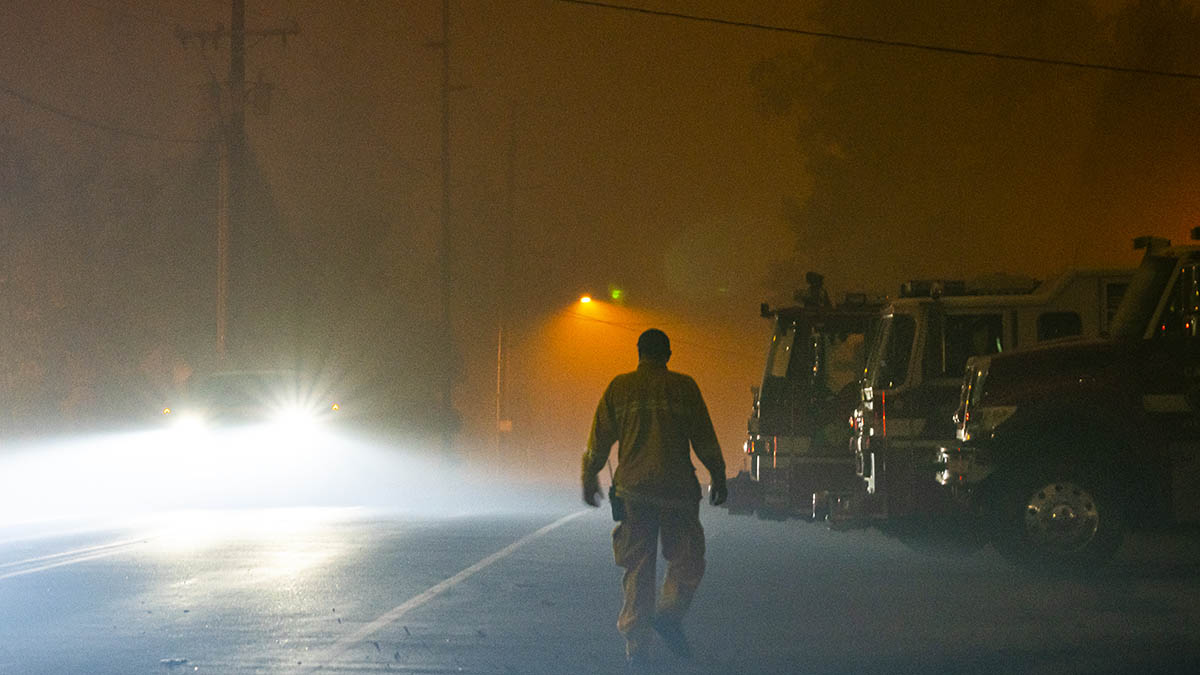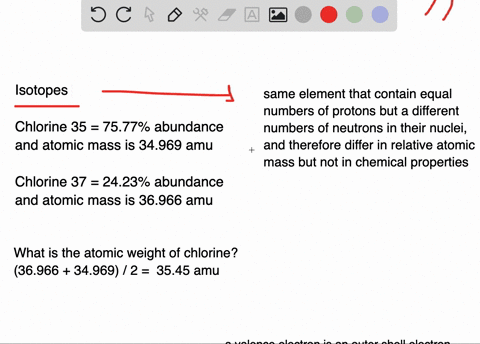Learning Objectives
Chlorine is a chemical element with atomic number 17 which means there are 17 protons in its nucleus. Total number of protons in the nucleus is called the atomic number of the atom and is given the symbol Z. The total electrical charge of the nucleus is therefore +Ze, where e (elementary charge) equals to 1,602 x 10-19 coulombs. The molecular ion peaks (M+ and M+2) each contain one chlorine atom - but the chlorine can be either of the two chlorine isotopes, 35Cl and 37Cl. The molecular ion containing the 35Cl isotope has a relative formula mass of 78. The one containing 37Cl has a relative formula mass of 80 - hence the two lines at m/z = 78 and m/z = 80. What is atomic mass for Chlorine-37 isotope? Answer: 36.965903 Da. What is isotopic mass for Chlorine-37 isotope? Answer: 36.965903. How many neutrons does Chlorine-37 isotope have? How many protons does Chlorine-37 isotope have? How many electrons does Chlorine-37 isotope have? What is atomic number for Chlorine-37 isotope? Neutron Number and Mass Number of Chlorine. Mass numbers of typical isotopes of Chlorine are 35; 37. The total number of neutrons in the nucleus of an atom is called the neutron number of the atom and is given the symbol N. Neutron number plus atomic number equals atomic mass number: N+Z=A. Chlorine – Atomic Number – Atomic Mass – Density of Chlorine Atomic Number of Chlorine. Chlorine is a chemical element with atomic number 17 which means there are 17 protons and 17. Atomic Mass of Chlorine. Atomic mass of Chlorine is 35.453 u. Note that, each element may contain more isotopes.
- Define atomic mass.
- Calculate atomic mass given relevant information about the isotopes.
Have you ever tried to move a boulder?
You have a pile of rocks to move and need to decide what equipment you want to rent to move them. If the rocks are fairly small, you can get a shovel to pick them up. Larger rocks could be moved by hand, but big boulders will need some sort of mechanical scoop. The amount of each kind of rock will also determine how much time you will need to get the job done. Knowing the relative amounts of large, medium, and small rocks can be very useful in deciding how to approach the job.

Most elements occur naturally as a mixture of two or more isotopes. Table below shows the natural isotopes of several elements, along with the percent natural abundance of each.
| Element | Isotope (symbol) | Percent natural abundance | Atomic mass (amu) | Average atomic mass (amu) |
| Hydrogen | [latex]^1_1text{H}[/latex] | 99.985 | 1.0078 | 1.0079 |
| [latex]^2_1text{H}[/latex] | 0.015 | 2.0141 | ||
| [latex]^3_1text{H}[/latex] | negligible | 3.0160 | ||
| Carbon | [latex]^{12}_6text{C}[/latex] | 98.89 | 12.000 | 12.011 |
| [latex]^{13}_6text{C}[/latex] | 1.11 | 13.003 | ||
| [latex]^{14}_6text{C}[/latex] | trace | 14.003 | ||
| Oxygen | [latex]^{16}_8text{O}[/latex] | 99.759 | 15.995 | 15.999 |
| [latex]^{17}_8text{O}[/latex] | 0.037 | 16.995 | ||
| [latex]^{18}_8text{O}[/latex] | 0.204 | 17.999 | ||
| Chlorine | [latex]^{35}_{17}text{Cl}[/latex] | 75.77 | 34.969 | 35.453 |
| [latex]^{37}_{17}text{Cl}[/latex] | 24.23 | 36.966 | ||
| Copper | [latex]^{63}_{29}text{Cu}[/latex] | 69.17 | 62.930 | 63.546 |
| [latex]^{65}_{29}text{Cu}[/latex] | 30.83 | 64.928 |
For some elements, one particular isotope predominates greatly over the other isotopes. Naturally occurring hydrogen is nearly all hydrogen-1 and naturally occurring oxygen is nearly all oxygen-16. For many other elements, however, more than one isotope may exist in more substantial quantities. Chlorine (atomic number 17) is a yellowish-green toxic gas. About three quarters of all chlorine atoms have 18 neutrons, giving those atoms a mass number of 35. About one quarter of all chlorine atoms have 20 neutrons, giving those atoms a mass number of 37. Were you to simply calculate the arithmetic average of the precise atomic masses, you would get 36.

[latex]displaystylefrac{left(34.969+36.966right)}{2}=35.968text{ amu}[/latex]
Clearly the actual average atomic mass from the last column of the table is significantly lower. Why? We need to take into account the percent natural abundances of each isotope in order to calculate what is called the weighted average. The atomic mass of an element is the weighted average of the atomic masses of the naturally occurring isotopes of that element. The sample problem below demonstrates how to calculate the atomic mass of chlorine.
Mass Number Of Chlorine-36
Sample Problem: Calculating Atomic Mass
Mass Number Of Chlorine-36
Use the atomic masses of each of the two isotopes of chlorine along with their percent abundances to calculate the average atomic mass of chlorine.
Step 1: List the known and unknown quantities and plan the problem.
Known
- chlorine-35: atomic mass = 34.969 amu and % abundance = 75.77%
- chlorine-37: atomic mass = 36.966 amu and % abundance = 24.23%
Unknown

- Average atomic mass of chlorine
Change each percent abundance into decimal form by dividing by 100. Multiply this value by the atomic mass of that isotope. Add together for each isotope to get the average atomic mass.
Step 2: Calculate
| chlorine-35 | 0.7577 × 34.969 = 26.50 amu |
| chlorine-37 | 0.2423 × 26.966 = 8.957 amu |
| average atomic mass | 26.50 + 8.957 = 35.45 amu |
Note: Applying significant figure rules results in the 35.45 amu result without excessive rounding error. In one step:
(0.7577 × 34.969) + (0.2423 × 36.966) = 35.45 amu
Step 3: Think about your result.
The calculated average atomic mass is closer to 35 than to 37 because a greater percentage of naturally occurring chlorine atoms have the mass number of 35. It agrees with the value from the Table above .

Watch these videos to learn more about these calculations:
Summary
- The atomic mass of an element is the weighted average of the atomic masses of the naturally occurring isotopes of that element.
- Calculations of atomic mass use the percent abundance of each isotope.
Practice
Click on the link below to get some experience in atomic mass determinations:
Mass Number Of Chlorine Rounded
Review
- Define atomic mass.
- What information do you need to calculate atomic mass for an element?
- Calculate the atomic mass for carbon using the data provided in Table below.
mass number | exact weight | percent abundance |
12 | 12.000000 | 98.90 |
13 | 13.003355 | 1.10 |
Mass Number Of Chlorine Isotopes
Glossary
- atomic mass: The weighted average of the atomic masses of the naturally occurring isotopes of that element.
- percent abundance: To calculate the weighted average, take into account the percent natural abundances of each isotope. The atomic mass of an element is the weighted average of the atomic masses of the naturally occurring isotopes of that element.
References
Atomic Mass Number Of Chlorine
- Devon Fyson, based on image created by the U.S. Geological Survey. http://commons.wikimedia.org/wiki/File:Mass_Spectrometer_Schematic.svg.
- George M. Groutas. http://www.flickr.com/photos/jorge-11/4777791888/.
